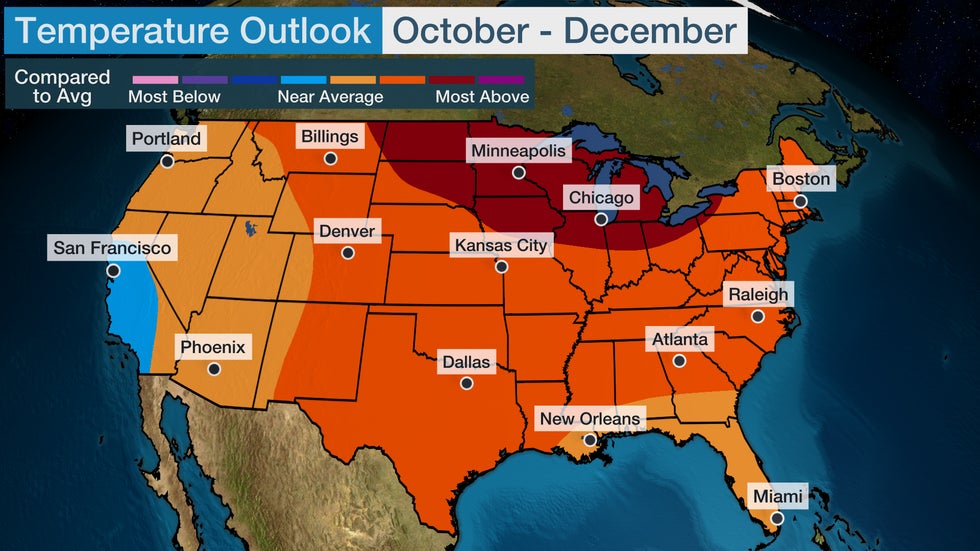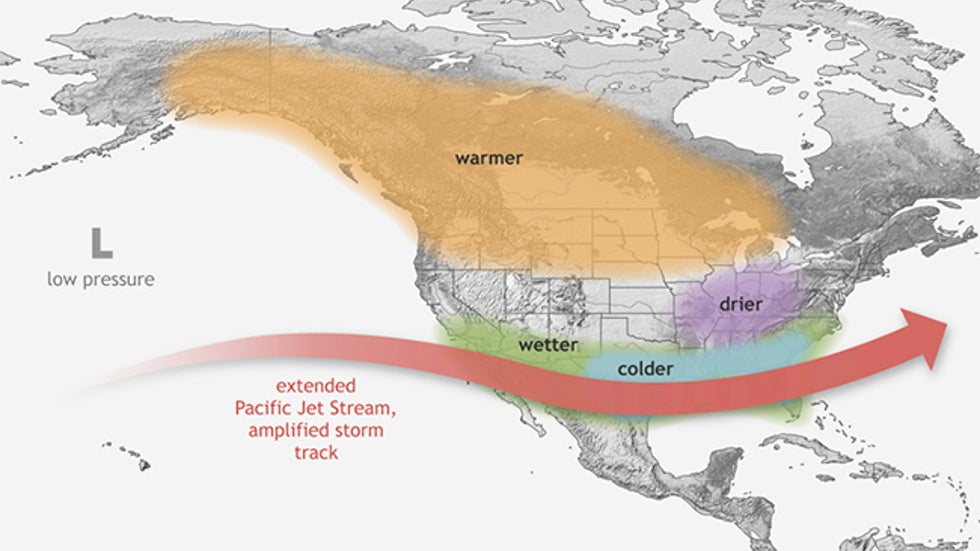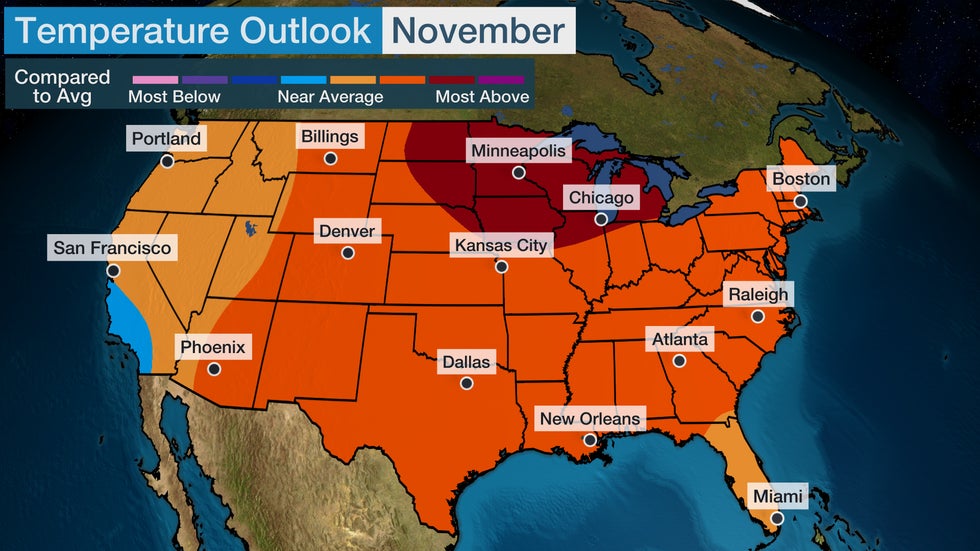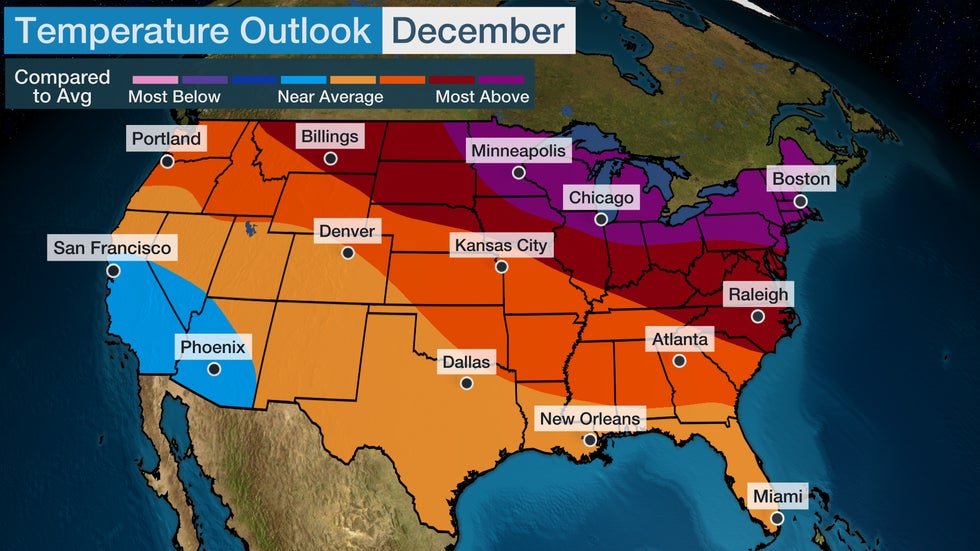Published: September 16, 2023
Temperatures will be warmer than average across much of the Lower 48 in the last quarter of the year, according to the latest outlook from The Weather Company, an IBM Business, and Atmospheric G2.
 Temperature outlook map for October through December.
Temperature outlook map for October through December.The big picture: Overall, temperatures are not expected to fall in October, November and December this year as fast as would be expected. The northern tier is likely to be warmer than average, particularly so in the Great Lakes. If you’re looking for tastes of winter, head to California where temperatures may be slightly cooler than average.
(MAPS: Fall Foliage Tracker)
Driving factors. The biggest driver of the outlook through the end of the year is El Niño. Water temperatures in the eastern equatorial Pacific are expected to be well above average into next year.
El Niño typically brings warmer temperatures relative to average across the northern tier of the US, but cooler and wetter conditions across the southern tier, particularly during the winter months.
 Typical impacts during an El Niño from December through February in North America.
Typical impacts during an El Niño from December through February in North America.While the oceanic conditions related to El Niño have been around for some time, the atmospheric response has not been as strong through mid-September.
The tropics can always exert cooling effects wherever they landfall and then transit inland during the October and November timeframes.
In addition, toward the end of the year, the strength of the polar vortex may assert its effects into the forecast. Generally, the weaker the polar vortex is, the more colder risks there are, especially later in the year.
(MORE: Strong El Niño Odds Increasing)
All that said, this is a rather low-confidence forecast given uncertainties in how the atmosphere will respond to the ongoing El Niño.
With what we know now, here's a look at the outlook month by month:
October: Central US to remain warmer. The most likely area to be warmer than average is the Upper Midwest while much of the West will be near average. Unfortunately for Texas and much of the Southern Plains, the warmth that persisted through the summer will likely continue into the cooler months.
 Temperature outlook map for October
Temperature outlook map for OctoberNovember: Warmer than average east of the Rockies. The October warmth may extend to the East Coast in November. Well above average temperatures will also expand eastward into the Great Lakes.
The West will remain near average as will much of Florida.
 Temperature outlook map for November
Temperature outlook map for November(NOAA: 95% Chance 2023 Will Be Among Earth's Two Warmest Years On Record)
December: Missing start to winter from the Midwest to the Northeast? Much above average temperatures are expected from the Northeast to the Upper Midwest. Temperatures may drop to near average across the Gulf Coast and into Texas and the Four Corners.
Temperatures may warm relative to average in the Northwest, but cool relative to average in the Desert Southwest and in California.
 Temperature outlook map for December
Temperature outlook map for DecemberThe Weather Company’s primary journalistic mission is to report on breaking weather news, the environment and the importance of science to our lives. This story does not necessarily represent the position of our parent company, IBM.
The Weather Company’s primary journalistic mission is to report on breaking weather news, the environment and the importance of science to our lives. This story does not necessarily represent the position of our parent company, IBM.

No comments:
Post a Comment